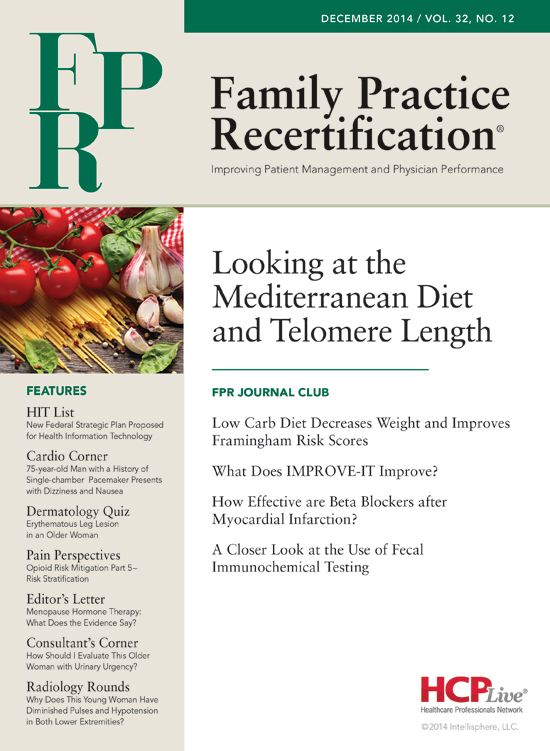Publication
Article
Family Practice Recertification
Opioid Risk Mitigation- Part 5 Risk Stratification
Author(s):
A commonly asked question by physicians pertains to the ideal frequency of urine drug testing. The answer is an unequivocal "it depends".

Michael Schatman, PhD, CPE
Last month’s Pain Perspectives addressed the issue of why clinicians who treat chronic pain with opioid analgesics need to diligently utilize urine drug testing (UDT) as a tool for risk mitigation. In this month’s column, I will discuss some of the practical issues associated with how to best utilize UDT in order to protect our patients and our practices.
A commonly asked question by physicians pertains to the ideal frequency of urine drug testing. The answer is an unequivocal “it depends”. It is important to understand that each patient presents with his or her specific level of risk for aberrancy, and accordingly, the frequency should be contingent upon that individual’s risk factors.
These risk factors, such as histories of substance abuse disorders, DUIs (driving under the influence) or drug-related arrests, tobacco use, depression and anxiety, were discussed in greater detail in the September installment of Pain Perspectives. Additionally, tests such as the Screener and Opioid Assessment for Patients with Pain (SOAPP) (1) or the Pain Medication Questionnaire (PMQ) (2) can be utilized to stratify patients as being at low, moderate, or high risk for opioid aberrancy. Depending on where you practice, risk assessment may be mandatory. For example, the Texas Medical Board rules make risk evaluation a requirement in opioid prescribing for chronic pain (3).
Perhaps the most important time to test a patient being considered for chronic opioid therapy is before initiating such treatment, as establishing a baseline is critical. Christo and colleagues (4) note that a baseline reading is important due to the fact that 90% of patients presenting for pain management have been exposed to opioids or other controlled substances. Undoubtedly, maximizing a patient’s veracity regarding drugs prior to prescribing is an important step in avoiding future catastrophe.
Once you have assessed a patient appropriately for risk factors and have obtained a baseline UDT, it is up to you to use that data to determine each patient’s risk for aberrant behavior — which should dictate the frequency of UDT. Certainly, a degree of subjectivity is involved in making such an assessment. While there is no “gold standard” for testing, it clearly makes sense to test those at higher risk more frequently than patients whose risk levels are low.
Owen and colleagues (5) have suggested that low risk patients be tested one to 2 times each year, moderate risk patients 3 to 4 times annually, and high risk patients at each monthly visit for medication refill. For low and moderate risk patients, testing should be random. I agree to an extent with this algorithm, although I do tend to be more specific yet more flexible.
If a moderate risk patient provides 3 consecutive consistent UDTs, I recommend moving him or her into the low risk category. Conversely, if a low risk patient produces an inconsistent UDT, I recommend moving them into the moderate risk category. “Consistent” refers to the UDT indicating no substances, licit or illicit, that should not be in the sample, while indicating that the patient is indeed taking the prescribed opioid in order to protect against potential diversion. High risk patients, like those with ongoing issues of substance abuse, should be prescribed opioids only if they are receiving concomitant treatment from a chemical dependency counselor and an addictionologist.
UDT is clearly a very complex yet very necessary process if primary care physicians are to include opioids in their pain management armamentaria.
In next month’s column, I will discuss the differences between immunoassay screening and confirmation testing. Do not be frightened by the complexity of the UDT process. With the assistance of a competent UDT company representative, you can quickly learn to utilize this tool in a streamlined fashion, thereby allowing you to practice safer and more effective primary care chronic pain management.
1) PainEDU. Opioid risk management. Available at: https://www.painedu.org/soapp.asp.
2) Adams LL, Gatchel RJ, Robinson RC, et al. Development of a self-report screening instrument for assessing potential opioid medication misuse in chronic pain patients. J Pain Symptom Manage. 2004;27:440-459.
3) Texas Medical Board. Board Rules - Texas Administrative Code, Title 22, Part 9, rule 170.3(a)(1)(B)(v). Available at: http://www.tmb.state.tx.us/idl/28B45C77-CA38-F5E1-1A71-330D499D21AC.
4) Owen GT, Burton AW, Schade CM, Passik S. Urine drug testing: current recommendations and best practices. Pain Physician 2012;15:ES119-ES133.
5) Christo PJ, Manchikanti L, Ruan X, et al. Urine drug testing in chronic pain. Pain Physician 2011;14:123-143.
About the Author
Michael E. Schatman, PhD, CPE, is a clinical psychologist who has spent the past 27 years working in pain management. He is currently the Executive Director of the Foundation for Ethics in Pain Care in Bellevue, WA, where he also maintains a part-time practice in pain psychology. Schatman is the author of more than 80 peer-reviewed and invited journal articles and book chapters on pain management, and he lectures regularly on both local and national bases. He is the editor of Ethical Issues in Chronic Pain Management and Chronic Pain Management: Guidelines for Multidisciplinary Program Development, both of which were released in 2007. Currently, he is Editor-in-Chief of the Journal of Pain Research, Ethics Section Head Editor of Pain Medicine and Psychological Injury & Law, and Deputy Editor-in-Chief of the International Journal of Cannabinoid Medicine. Schatman serves on the Board of Directors of the American Society of Pain Educators, which named him 2011 Clinical Pain Educator of the Year.






